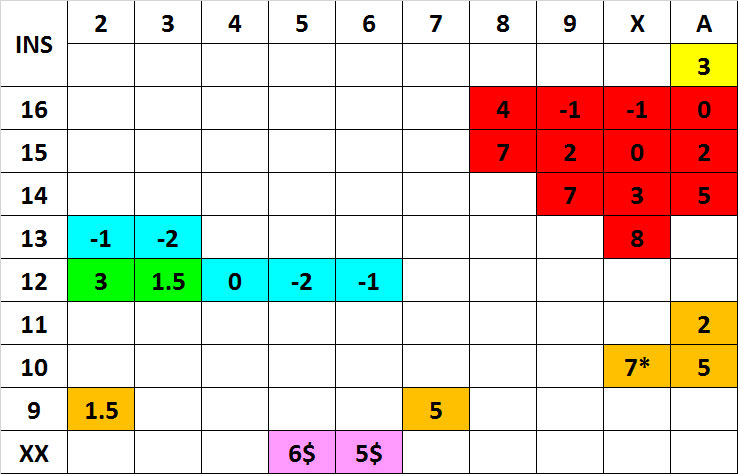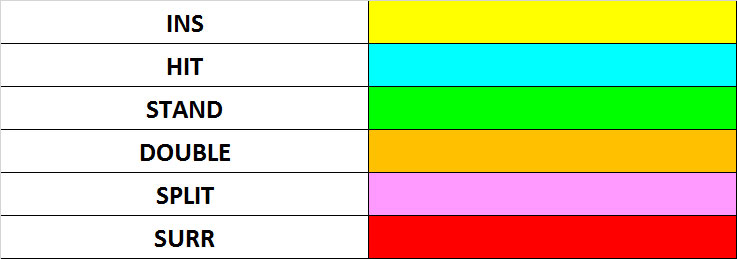Advanced Card Counting: Blackjack Strategy Deviations

In Blackjack, Basic Strategy is the series of decisions that a player adheres to so that they can incur the minimal loss of funds over time. It tells the player when the appropriate time to stand, hit, double down, split and if applicable when to surrender (this where the player surrenders half of their initial bet to the casino). These actions are determined by computer simulation, and decision points become firm at around 400 million hands. However; in certain situations it becomes necessary to deviate from this strategy to gain maximum profitability over the casino.
Imagine a situation where the player has an initial 2 cards that total 16, while the dealer has a 7 as an up card. If the player some-how knew that the next card was a 5, the most financially beneficial play that they can make is to double down. The 5 would give the player a total of 21, which is a no lose scenario for the player. And if the dealer also draws to total of 21 the result is a push. The most likely outcome is player wins, and when this is the most likely outcome a wise casino player wants to have as much money on the table as possible. Doubling down achieves this, and becomes the obvious choice here.

Unfortunately most strategy deviations are not this straight forward. The most common strategy deviations are deck composition dependent. This means that the player relies on the knowing what cards have been played, so they can determine the cards that are yet to be played. The player is not required to memorize all the cards that come out of the shoe. This is quite impossible to do, especially over a six deck shoe that total 312 cards. So despite what you may have seen in the Tom Cruise and Dustin Hoffman film “Rain Man,” instantly committing the cards to memory in real time is not the case. A far more elegant approach is taken.
In blackjack each card that is dealt either adds too, or subtracts from the initial advantage the casino has over the player. The shifting percentages can be kept track of using any number of counting systems. Each system has their pros and cons, and this will be covered in another article. The simplest counting cards system, and therefore the system subject to the least amount of errors is the Hi-Lo count system. The Hi-Lo count works by assigning values to the cards. All cards 2-6 are assigned a value of +1. Cards 7, 8 and 9 have a value of 0 and Aces and face cards and 10s have a value of -1.

The cards are added up after each round and total is calculated. This is termed the running count. The running count value is then divided by how many decks are yet to be played (the number of decks is estimated by looking at the cards in the discard tray and estimating the number of decks yet to be played). The running count divided by the decks remaining is called the True count. The True count is a normalization of the proportional ratio of high cards to low cards or low cards to high that remain per deck (on average). For example the if there are is a running count of +15 and three decks of a 6 deck shoe has been played than the True Count is +5 ( 15 divided by 3 equals 5)
ADJUSTED INDEX NUMBERS
The True Count calculation gives the player a value that represents the deck composition. The more positive the number is the more likely a high card will be drawn next, and the more negative the number is the less likely a high card will be drawn. Thereis a True Count value at which a basic blackjack strategy deviation play is mathematically justified. But many of these situations rarely occur and it is not worth the effort to memorize over 175 individual index numbers. But there is a sub group of these index plays called the ILLUSTRAIOUS 18. These 18 plays when executed consistentlyincreasethe profitabilityof game byapproximately 10%. This may not seem to be a lot but over time this adds up. A yearly win can go from 25,000 dollars to 27,500. That is easily a down payment on a car or a nice vacation.Thechartbelowrepresentsthe ILLUSTRIOUS 18 using the Hi-Lo count system.

THE ILLUSTRIOUS 18 WITH SURRENDER

- These are the 18 most advantageous deviations from basic strategy, based on the Hi-Lo count. The 18 plays described equal about 80% of the gain that could be had from playing the full set of indexes.
- Note that as we have blackjack surrender option available, some of those indexes have superseded the I -18 index.
- Only double when playing two hands or when playing one hand and maxed out.
- $ Add 1 to each index for each stiff you get when splitting tens.
- Ex. If you split XX against a 5, and get a X on one of them, the index moves from 6 to 7 to decide to split XX on the new hand.
- TC ≥ for each decision

The ILLUSTRAIOUS 18 index numbers will vary from count system to count system. The USTON APC counting system is a 4 level system where the player also keeps a side-count of ACES so it is easy to see that it is a more precise counting system then the simple Hi-Lo system. Because of this increased precision, the index numbers that tell the player when to deviate from basic strategy also become more precise.
The ILLUSTRIOUS 18 index numbers are the most common form of strategy deviations that a player will employ over their career. As the persistent student gains understanding and proficiency in additional forms of Advantage Play more complex deviations are adhered too.


